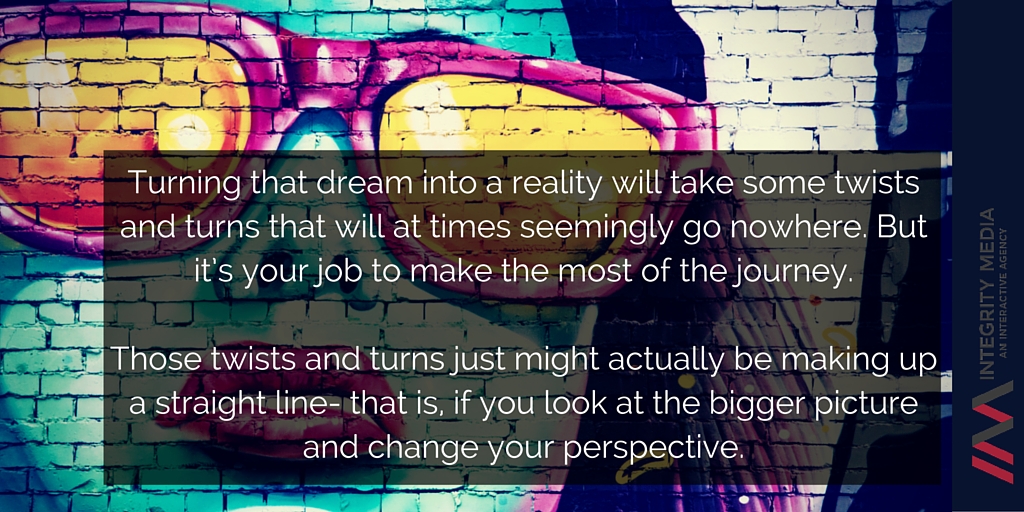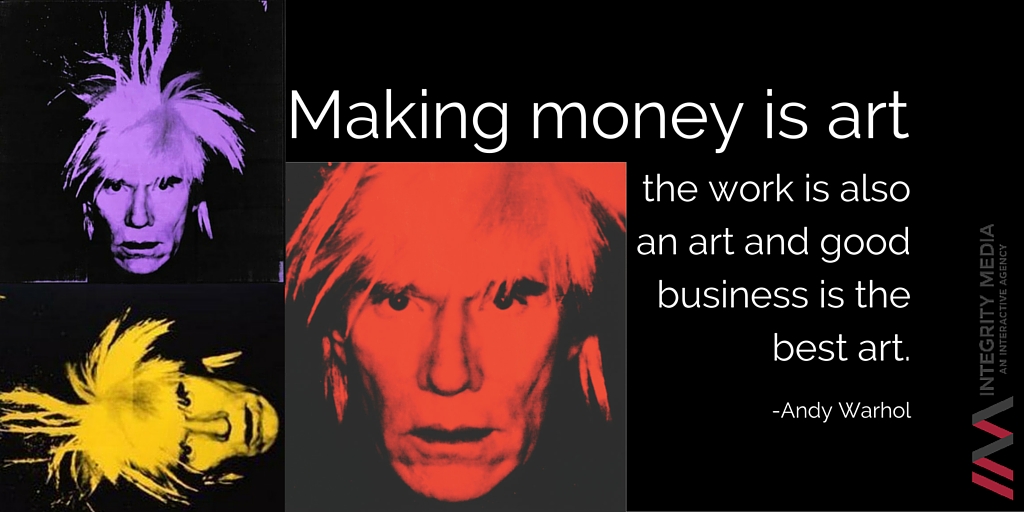Drawing unicorns, doodling on the margins of your high school homework, chalking up a sidewalk, or even spray-painting graffiti on that abandoned warehouse building. We express ourselves in some of those “out-there” ways. Sometimes that creativity leads to a job. Sometimes it doesn’t. Sometimes that dream job becomes a reality. And sometimes you end up stuck at a desk job, dreaming about becoming who you KNOW you were born to be.

(A quick lecture on opportunities: They don’t just fall into your lap. They are circling around, waiting for you to grab them and risk absolutely everything.)
The biggest challenge and obstacle in a creative career path is monetizing that creativity.
Artists like Andy Warhol and young Jonathan Luczycki made a living with their art. Though Jonathan’s story is more luck than planning. Warhol drew inspiration from pop culture and at the same time contributed to and shaped it. Fashion Designer Alexander McQueen created dark and daring masterpieces of clothing that still take your breath away in museum exhibitions, years after his death. How these artists went about monetizing their art is worth a blogpost of its own.
Yet many artists throughout history died penniless. Artists like Van Gogh and Edgar Allan Poe never managed to monetize their art.
The Starving Artist Myth is, quite frankly, the fault of the artist. Expecting art to sell itself is simply naive and absolutely false. The problem is that those artists simply don’t know how to market themselves or their work. With so many artists (and brands) out there, thinking that consumers will just swoon at every product or masterpiece is quite costly.
But is real creativity marketable? Pondering these questions, an artist would say, “absolutely not. My art is one of a kind, not commercial, but unique and priceless.” Without going to deep into economics, Hermes has successfully employed the scarcity principle into its business model. Handbags are exemplary works of craftsmanship and akin to art. Moral of the story? Either hone your marketing skills at being a commercial artist, or learn the principles behind monetizing scarce art.
Is there an artist who doesn’t believe they will be the next “Van Gogh” or “Chanel”? The question begging to be asked is, what value are these up-and-coming artists/designers bringing to the art world? Part of the marketing, or branding process, is understanding the purpose behind the brand, artist, and work. Without a focus and a plan on distributing the art, the world’s next Mona Lisa may just end up lying in storage, gathering dust, and taking up valuable space
This rant has (fortunately) come to an end. I’d just like to sum up everything said with this quote:
“Making money is art, the work is also an art and good business is the best art.” -Andy Warhol




